Is there anything more frustrating than standing in ankle-deep water while you wait for your sink or shower to drain? Clogged pipes are a common household nuisance, but before you reach for harsh chemicals or panic, the team at Winstar Hardware is here to empower you with some safe and effective DIY techniques to unclog your drains.
In this guide, we’ll walk you through simple steps you can take to tackle those pesky clogs yourself, often using items you already have at home. We’ll also highlight the right tools you can find at our store to make the job easier, and crucially, we’ll help you recognize when it’s time to in call the professionals. Let’s get started!
In-Depth Look at Clog Causes
To truly understand how to prevent and unclog your drains, you first have to understand what causes them. Our home drains, from the kitchen sink to the shower, are the silent workhorses of our plumbing system. They handle a constant flow of waste, but not all of it is as harmless as it seems. Let’s take a closer look at the primary culprits that create blockages.
The Culprits: What Gets Stuck and Why
1. The Hair Monster
In the bathroom, the number one enemy of a free-flowing drain is hair. Each time you wash your hair, strands go down the drain. While a few strands might seem insignificant, over time they accumulate, creating a tangled, web-like mass. This hair monster acts as a net, catching other debris like soap scum, conditioner residue, and dirt. It’s like a snowball effect: the more hair that gets trapped, the faster the blockage grows. The result is a slow, sluggish drain that eventually stops completely.
2. The Grease Blob
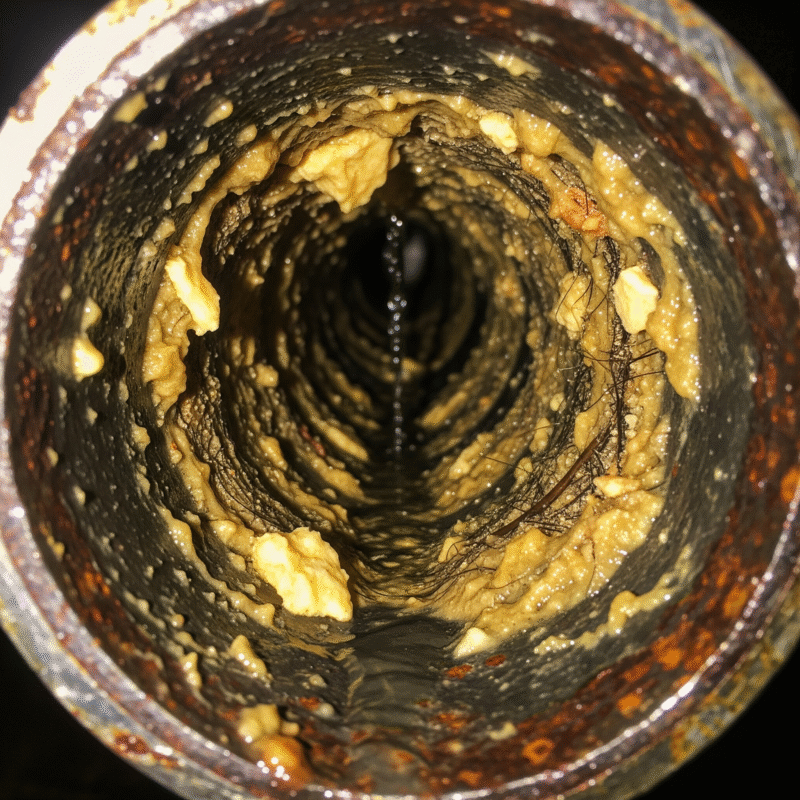
In the kitchen, the main cause of clogs is grease and cooking oil. Many people mistakenly think it’s okay to pour hot liquid grease down the drain. While it’s in a liquid state, it travels down the pipes, but as it cools, it solidifies and clings to the pipe walls. This sticky film acts as a magnet for other food particles, coffee grounds, and debris. Over time, this buildup restricts the flow of water, leading to a slow-draining sink and eventually a complete blockage.
3. Soap Scum & Mineral Deposits
Soap scum is more than just a nuisance on your shower tiles; it’s a major contributor to clogs. When soap reacts with the minerals in hard water, it forms a sticky residue. This residue clings to the inside of pipes, just like grease, and traps hair and other debris. It’s particularly common in showers and bathtubs. Over time, this buildup can significantly reduce the internal diameter of the pipe, slowing drainage and providing a perfect breeding ground for bacteria that cause foul odors.
4. The Foreign Invaders
This category is for the items that have no business being in your pipes. The toilet is often the victim here. Baby wipes, paper towels, cotton balls, dental floss, and feminine hygiene products are not designed to dissolve in water like toilet paper. Flushing them can cause a severe blockage in your toilet or, even worse, in your main sewer line. In kitchen drains, foreign invaders can include food wrappers, broken cutlery, or other non-organic items that accidentally fall into the drain.
A Day in the Life of a Drain
Imagine your kitchen drain on an average day.
- 6:30 AM: A splash of coffee grounds from your morning brew goes down the drain.
- 8:00 AM: You rinse a bowl with leftover oatmeal. A few grains slip past the drain strainer.
- 1:00 PM: Lunch is over. You rinse a pan with a thin layer of cooking oil. It looks harmless and liquid, so down it goes.
- 7:00 PM: Dinner is done. As you wash the dishes, a few bits of rice and pasta from the sink slip through.
Throughout the day, each of these seemingly small events contributes to the grease blob forming inside your pipes. The coffee grounds and food scraps get stuck to the sticky grease, and with each passing day, the blob grows larger and more solid.
In the bathroom, the narrative is similar. Hair, soap, and dirt are a constant threat. Your drain is a battlefield, and a clogged pipe is the inevitable result of this constant onslaught.
By understanding the root causes of these blockages, you can become a better “plumber” in your own home. The most effective strategy is always prevention—stopping these culprits before they can even enter your pipes.
A Deep Dive into Your Home’s Waterways
Most of the time, our home’s plumbing system works silently and efficiently, a hidden network of pipes, traps, and vents. But when a clog happens, it’s a clear signal that something is off in this intricate system. To truly become a DIY drain cleaning expert, you need to understand not just what to do, but why you’re doing it. Let’s pull back the curtain and explore the key components that keep your drains flowing.
The P-Trap
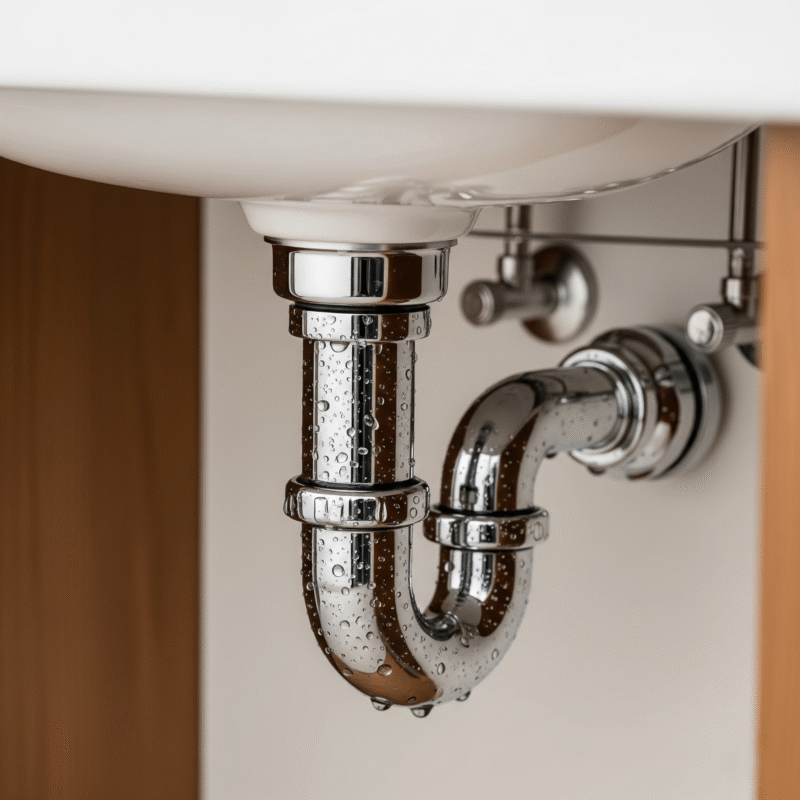
Look under any sink, and you’ll find a U-shaped or S-shaped pipe. This is the P-trap. Its simple design serves a crucial purpose: it always holds a small amount of water. This water barrier, or “trap seal,” is what prevents noxious sewer gases from entering your home. Without it, your bathroom and kitchen would be filled with foul odors.
- How it works: When water flows down the drain, it pushes the old water in the P-trap out and replaces it with new water. This continuous refresh keeps the trap seal intact.
- How it relates to clogs: The P-trap is the most common location for clogs. Its U-bend is designed to catch heavy debris like hair, soap, and grease before they can travel deeper into your plumbing system. Most minor clogs can be found and cleared right here. This is why a simple plunger or a small handheld snake is often all you need.
The Drain Vent System
Have you ever wondered why water gurgles or drains slowly when you have a partial clog? The answer lies in your home’s vent system. This is a series of pipes that run from your drains and up through your roof.

- How it works: The vent system allows air to enter the drain pipes behind the draining water. This creates positive pressure and prevents a vacuum from forming. Think of it like pouring a drink from a soda bottle: if you don’t allow air to enter the bottle, the liquid will glug out slowly. Your vent system prevents this “glugging” from happening in your drains, ensuring a smooth, steady flow.
- How it relates to clogs: When a drain is partially clogged, it can block the path of the vent pipe, creating a vacuum. This is what causes the slow drainage and the tell-tale gurgling sound. A severe blockage in the main sewer line can cause air pressure issues throughout your entire home, leading to gurgling sounds from multiple drains at once.
The Main Sewer Line
All the drains in your home—from sinks and showers to toilets and washing machines—eventually connect to a single, larger pipe known as the main sewer line. This is the highway that carries all the wastewater from your home to the municipal sewer system or your septic tank.
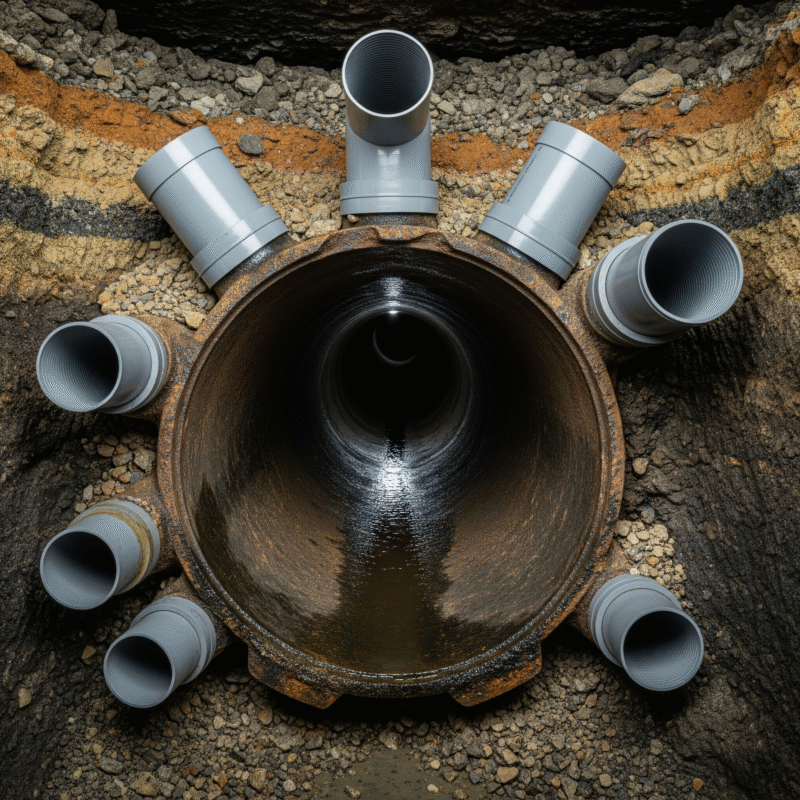
- How it relates to clogs: A clog in the main sewer line is the most serious type of blockage you can face. Because all other pipes feed into it, a main line clog will cause a domino effect. You might notice your toilet backing up when you run the kitchen sink or your shower filling with water after you flush the toilet. These are critical signs that the problem is not isolated to one drain but affects the entire system.
- Why it requires a professional: Main sewer line clogs are often caused by tree roots, broken pipes, or a buildup of non-flushable materials over many years. These require specialized tools like a professional-grade auger, camera inspection equipment, or even excavation to fix, making them a job for a qualified plumber.
By understanding how these three components work together, you can better diagnose the nature of your clog. A simple P-trap clog is a DIY job, but a gurgling sound or water backing up in multiple fixtures is a cry for help from your main sewer line—a cry you should not ignore.
Environmental Impact: The Case for Eco-Friendly Drain Cleaning
When faced with a stubborn clog, the easy solution might seem to be reaching for a powerful, store-bought chemical drain cleaner. But while these products promise a quick fix, they often come at a significant cost to your pipes and, more importantly, the environment. Choosing DIY and eco-friendly methods is not just about saving money; it’s about protecting our shared waterways and preserving the health of our planet.
The Hidden Dangers of Chemical Drain Cleaners
Most commercial drain cleaners use harsh, caustic ingredients like lye (sodium hydroxide) or sulfuric acid. These powerful chemicals work by creating a heat-generating reaction that breaks down organic matter. However, this reaction can be incredibly damaging.
- Damage to Pipes: These chemicals can corrode and weaken certain types of pipes, particularly older PVC and metal pipes. Over time, repeated use can lead to brittle pipes, pinhole leaks, and expensive, extensive repairs.
- Environmental Harm: When these chemicals are flushed down the drain, they enter our sewer systems and, eventually, our rivers, lakes, and oceans. The toxic substances can harm aquatic life, disrupt ecosystems, and contaminate drinking water sources.
The Benefits of a Greener Approach
By opting for simple, natural methods, you’re making a conscious choice to protect your home and the planet.
- Natural Ingredients: Methods like using baking soda and vinegar or simply flushing with boiling water rely on non-toxic, biodegradable ingredients that don’t harm your plumbing or the environment.
- Safer for Your Home: You eliminate the risk of chemical burns, toxic fumes, and accidental ingestion by children or pets.
- Sustainable Maintenance: Using natural, preventative measures like enzyme cleaners or regular hot water flushing creates a sustainable cycle of maintenance that keeps your drains clear without introducing harmful substances into the ecosystem.
By choosing a DIY approach, you become a steward of your home’s plumbing and a protector of the environment. Every time you opt for a natural solution to unclog your drains, you’re contributing to a healthier planet for all.
Essential Methods for Unclogging your Drains
For many common household clogs, the solution is right at your fingertips. These fundamental methods are safe, effective, and should be your first line of defense before resorting to more aggressive techniques.
The First Line of Defense: Boiling Water
Sometimes, the simplest solutions are the most effective. For minor clogs caused by grease or soap buildup, pouring boiling water down the drain can often do the trick.
How to do it: Carefully boil a kettle or pot of water and slowly pour it down the affected drain. Be cautious to avoid splashing! You might need to repeat this a couple of times for the best results.
Why it works: The heat from the boiling water can help to melt away fatty substances and flush them through the pipe.
The Power Duo: Baking Soda and Vinegar
This classic combination creates a natural chemical reaction that can help to break down organic matter and clear minor clogs. It’s a safer and more environmentally friendly alternative to harsh chemical drain cleaners.
How to do it:
- Pour about one cup of baking soda down the drain.
- Follow it with one cup of white vinegar.
- Let the mixture fizz and work its magic for about 30 minutes. You can cover the drain opening to contain the reaction.
- Flush the drain with hot water.
You can repeat this process if needed. For stubborn odors, you can also let the mixture sit overnight before flushing. You can learn more about the science behind this reaction from resources like this article on baking soda and vinegar reactions.
The Anatomy of Plungers and Snakes
While a plunger and a drain snake might seem like universal tools, choosing the right type for the specific clog you’re facing is key to a fast and effective fix. Using the wrong tool can be frustrating and may even damage your pipes. Let’s break down the different types of these essential plumbing tools.
Plungers: The Master of Suction
A plunger works by creating a vacuum and using a sudden burst of pressure to dislodge a clog. But not all plungers are created equal.
- The Cup Plunger: This is the most common type of plunger, featuring a simple rubber cup at the end of a wooden handle. It’s designed for use on flat surfaces like a kitchen sink or a bathtub drain. Its effectiveness relies on a tight seal around the drain to create the necessary suction.
- The Flange Plunger: Easily recognizable by the additional rubber flap, or “flange,” that extends from the bottom of the cup, this plunger is the go-to for toilet clogs. The flange is designed to fit snugly into the curved opening of the toilet bowl, creating a perfect seal. For sinks and tubs, the flange can be folded up to use it like a regular cup plunger.
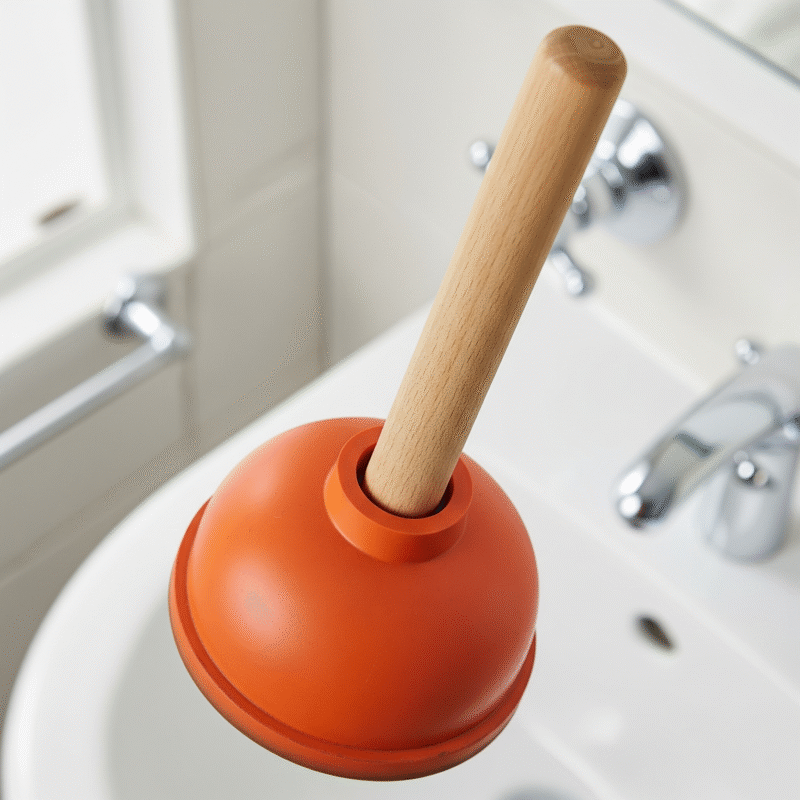
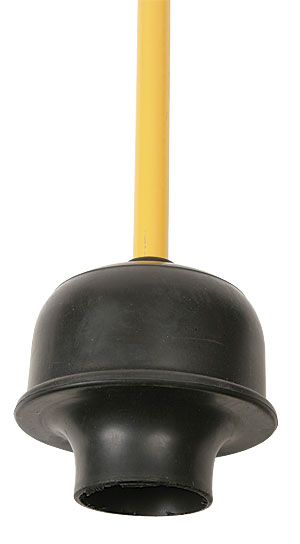
Proper Use: The technique for both plungers is to first ensure the plunger head is submerged in water to create a seal. Then, plunge firmly and quickly in a straight up-and-down motion, maintaining the seal to build pressure.
Drain Snakes: The Mechanical Destroyer
When a clog is too stubborn for a plunger, a drain snake (also known as a drain auger) is your next step. It’s a long, flexible cable with a corkscrew tip that physically breaks up or retrieves the blockage.
- Handheld Drain Snake: Ideal for simple, isolated clogs in sinks, showers, and bathtubs. They are typically manual and have a crank handle to feed the flexible cable into the pipe. The cable is stored in a drum, keeping the mess contained. Check this video on how to unclog your drain using a handheld drain snake.
- Closet Auger (Toilet Auger): This is a specialized tool with a unique curved design and a protective casing. It’s designed specifically for toilet clogs, allowing you to thread the cable into the bowl without scratching the porcelain. It’s a must-have for any homeowner who has dealt with a recurring toilet clog. For a visual guide guide, check out this video
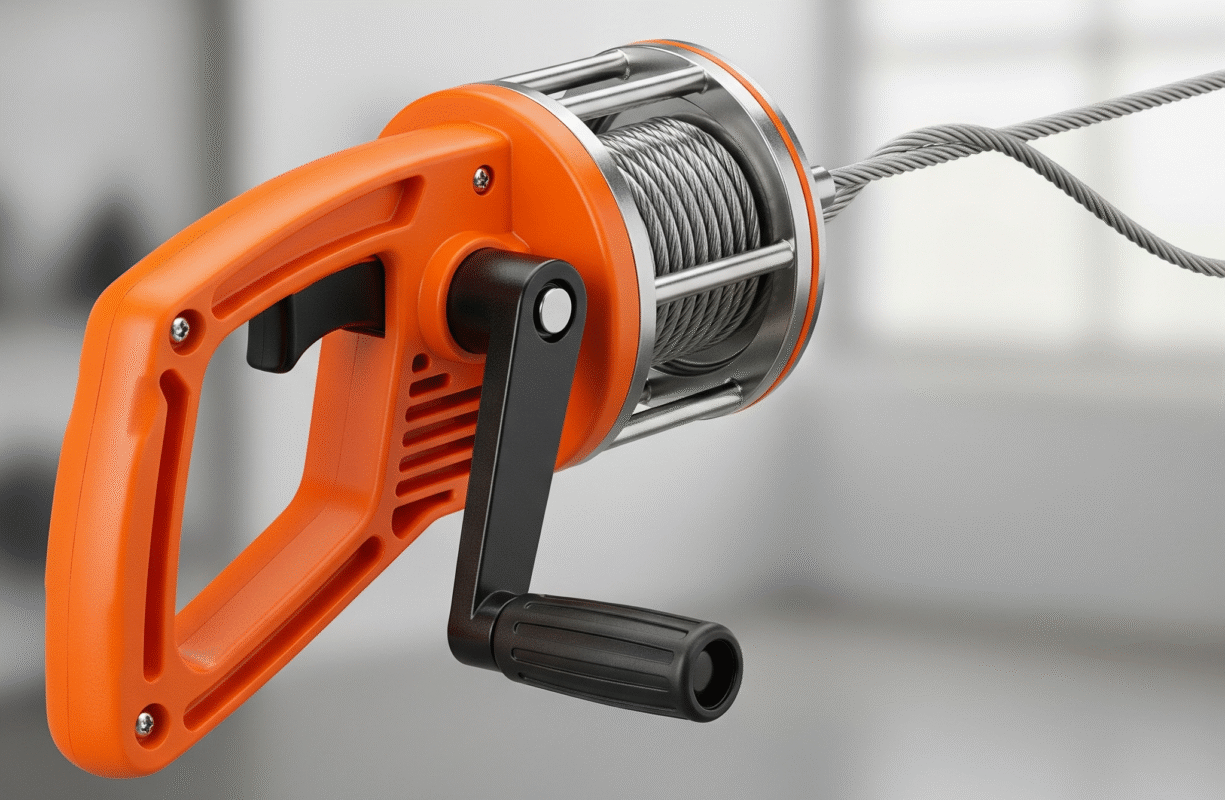
Proper Use: For both types, slowly feed the cable into the drain, turning the handle clockwise to help it navigate bends. When you feel resistance, you’ve likely hit the clog. Continue turning the handle to either break up the blockage or pull it back out.
Advanced DIY Techniques to Unclog your Drains
While the classic methods of boiling water, baking soda, vinegar, plungers, and snakes are incredibly effective for most common clogs, sometimes you need to bring in a bit more power or a more specialized approach. These advanced DIY techniques can tackle stubborn blockages or offer long-term preventative solutions.
1. The Power Sucker: Using a Wet/Dry Shop Vacuum for Clogs
A wet/dry shop vacuum isn’t just for cleaning up spills; it can be a surprisingly effective tool for clearing certain types of drain clogs, especially those caused by a solid blockage close to the drain opening. The principle is simple: instead of pushing the clog further down, you’re using powerful suction to pull it out.
- How it Works: A wet/dry shop vacuum can generate significant suction, creating a powerful vacuum that can dislodge and pull out blockages that a plunger might not move. It’s particularly useful for clogs in sinks, tubs, and even shower drains, where the clog is relatively close to the surface.
- Best for:
- Solid clogs: Hairballs, soap scum, or small objects that have fallen into the drain.
- Accessible clogs: Those that are not too deep within the plumbing system.
- When plungers fail: If a plunger isn’t creating enough suction or isn’t dislodging the blockage.
How to Use Your Shop Vacuum for a Clog:
- Safety First: Ensure your shop vacuum is rated for wet use. Never use a standard dry-only vacuum for this purpose, as it can cause electric shock.
- Clear the Area: Remove any drain covers, strainers, or stoppers from the clogged drain.
- Create a Seal: This is the most crucial step. You need to create an airtight seal between the shop vacuum hose and the drain opening.
- For sinks and tubs, you can often use an old towel, a rag, or a specialized drain attachment (if your shop vacuum came with one) to wrap around the hose end and jam it tightly into the drain.
- For toilet clogs, use a specialized toilet attachment for your shop vacuum, or carefully shape an old towel around the hose to fit snugly into the toilet bowl opening, ensuring no air escapes.
- Seal any other openings in the sink or tub (like overflow drains) with duct tape or a wet rag to maximize suction.
- Engage Suction: Turn on the shop vac. The powerful suction should begin to pull the clog out. You might hear gurgling or a sudden rush of water as the blockage is dislodged.
- Check and Repeat: Turn off the vacuum and remove the hose. Check if the drain is clear by running water. If not, repeat the process. You may need to clear debris from the shop vacuum’s canister between attempts.
Important Note: While powerful, a shop vacuum is not suitable for all clogs, especially those deep in the main sewer line. It’s best for isolated, more superficial blockages.
2. The Biological Solution: Enzyme and Bacteria Drain Cleaners
Moving beyond mechanical force, enzyme and bacteria drain cleaners offer a biological approach to drain maintenance. Unlike harsh chemical cleaners that use caustic substances, these products leverage nature’s own cleaning power to keep your pipes clear. They are less about immediate clog removal and more about long-term pipe health and prevention.
- How They Work: These cleaners contain live bacteria and enzymes that are specifically formulated to “eat” or break down organic materials like grease, soap scum, hair, and food particles. The enzymes act as catalysts, breaking down complex organic molecules into smaller, digestible pieces, which the bacteria then consume. Over time, this biological process effectively “digests” the buildup on the inside of your pipes.
- Key Benefits:
- Eco-Friendly: They are non-toxic, non-corrosive, and safe for your pipes and the environment, unlike chemical drain cleaners that can be harmful to plumbing systems and aquatic life.
- Preventative: Best used as a preventative measure or for maintaining slow drains. They work slowly but consistently to prevent clogs from forming.
- Odor Control: By breaking down organic matter, they also eliminate the source of unpleasant drain odors.
- Safe for Septic Systems: Many are designed to be safe for homes with septic tanks, as they don’t introduce harmful chemicals that can disrupt the delicate balance of the septic system.
How to Use Enzyme and Bacteria Cleaners:
- Read Instructions Carefully: Follow the manufacturer’s specific directions, as application methods can vary.
- Apply at Low-Use Times: Typically, these cleaners are most effective when applied before bed or during a period when the drain will not be used for several hours. This allows the enzymes and bacteria ample time to work without being flushed away.
- Regular Application: For optimal results, these products often require regular application, such as once a month, to prevent new buildup from accumulating.
- Not for Emergency Clogs: It’s crucial to understand that these are not quick fixes for a completely blocked drain. For immediate, severe clogs, you’ll need mechanical methods like a plunger or snake, or a professional plumber.
By incorporating these advanced DIY techniques, you can empower yourself with even more tools to maintain a healthy and free-flowing plumbing system, ensuring your home’s waterways remain clear and problem-free.
Seasonal Drain Maintenance
Just like your home needs different care with the changing seasons, so does your plumbing. In Kenya, with its distinct wet and dry seasons, a proactive approach to drain maintenance can prevent major headaches and costly repairs. Here’s how to keep your home’s waterways clear throughout the year.
The Rainy Season
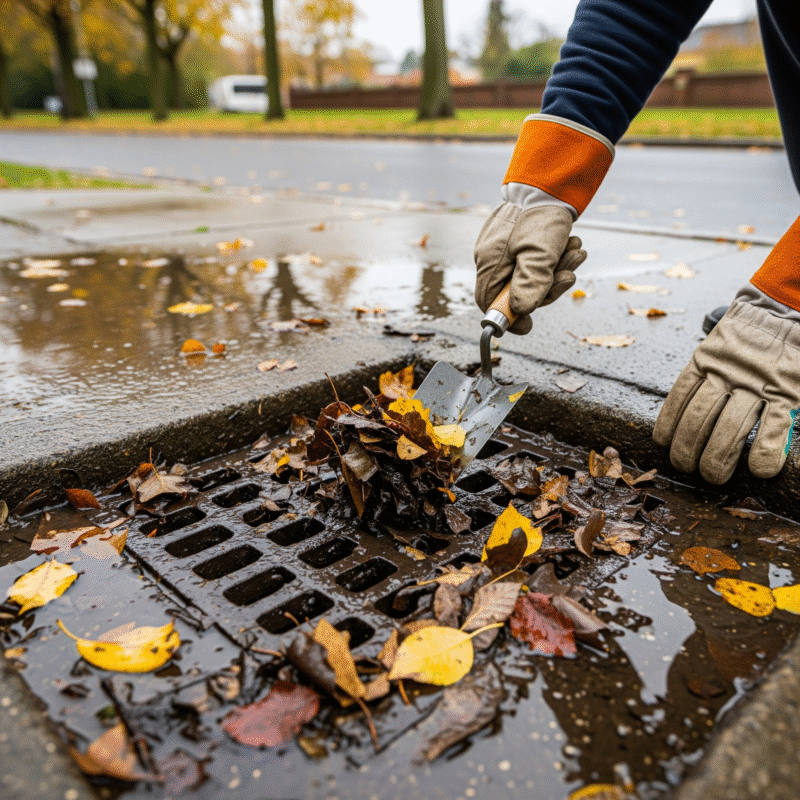
The long rains and short rains bring much-needed water, but they also bring a flood of potential problems for your drains. All that rainwater carries leaves, dirt, twigs, and other debris that can overwhelm and clog your outdoor drains and gutters.
- Guard Your Gutters: Ensure your gutters are free of leaves and debris before the rainy season begins. Clogged gutters can cause water to overflow and pool around your home’s foundation, potentially leading to structural damage.
- Clear Outdoor Drains: Regularly check and clear your outdoor storm drains. Remove any buildup of soil, leaves, and other organic matter that can block the path of rainwater. Consider installing a drain guard or mesh cover to catch larger debris.
- Check for Backflow: Heavy rains can sometimes cause sewer systems to back up. If you notice any water or sewage coming up through your drains during a heavy downpour, it’s a critical sign of a deeper blockage that requires immediate professional attention.
The Dry Season
The dry, dusty conditions of Kenya’s hot season can also be hard on your drains. Dust, sand, and fine soil can find their way into outdoor and indoor pipes, especially if you’re using water for cleaning or gardening.
- Flush Regularly: With less frequent use of some drains (like outdoor spigots), sediment can settle and harden. Make it a practice to flush all your drains with hot water once a week. This helps to dissolve any minor buildup and keep the pipes clean.
- Stay Vigilant for Odors: In the dry season, the water in your P-traps can evaporate more quickly, allowing sewer gases to enter your home. If you notice a foul odor, simply run some water down the drain to replenish the trap seal.
- Maintain Your Plumbing: This is an ideal time to perform routine maintenance. Check for any leaks or signs of corrosion and address them before the rains return.
Long-Term Solutions for Seasonal Challenges
By understanding the seasonal risks, you can implement long-term solutions that protect your plumbing.
- Install Drain Screens: This simple, inexpensive solution is your best year-round defense. Use drain screens in all your indoor and outdoor drains to catch hair, food scraps, and leaves, significantly reducing the amount of debris that enters your pipes.
- Smart Landscaping: Be mindful of where you plant trees and shrubs. Roots are a common cause of severe main sewer line clogs. Avoid planting large-rooted plants near your plumbing or sewer lines.
- Proactive Enzyme Treatments: Consider using an eco-friendly enzyme drain cleaner once a month, particularly at the end of the rainy season, to break down any organic buildup that may have occurred.
By making seasonal drain maintenance a part of your home care routine, you can ensure your plumbing system is ready to handle whatever the weather brings, saving you from the stress of unexpected clogs and backups.
Knowing When to Call a Professional Plumber
While DIY methods can handle many common clogs, there are times when it’s best to call in the experts. Ignoring these signs can lead to more significant plumbing problems and costly repairs down the line.
Call a plumber if:
- The clog is severe and doesn’t respond to DIY methods: If you’ve tried plunging, baking soda and vinegar, and using a plumbing snake without success, it’s likely a more stubborn blockage that requires professional tools and expertise.
- You suspect a main sewer line blockage: Multiple clogged drains in your house or sewage backing up in multiple fixtures are strong indicators of a problem with your main sewer line. This requires immediate professional attention.
- There are signs of pipe damage or corrosion: If you notice leaks, cracks, or other damage to your pipes, attempting to clear a clog yourself could worsen the situation.
- You’re uncomfortable or unsure about any of the DIY methods: Your safety and the integrity of your plumbing system are paramount. If you’re not confident in your ability to tackle a clog, it’s always best to err on the side of caution and call a qualified plumber.
Your Trusted Plumbing Partner in Kenya
At Winstar Hardware, we’re more than just a store; we’re your neighbors and your partners in maintaining a healthy and functional home. We stock a wide range of high-quality plumbing tools and materials to help you with your DIY efforts, and we’re always happy to offer advice and guidance.
Remember, if you encounter a clog that’s beyond your comfort level or DIY capabilities, don’t hesitate to reach out to a professional plumber. Taking prompt action can prevent minor issues from escalating into major headaches.
Stop by our store in Dagoretti, Naivasha or Nakuru to stock up on your drain cleaning essentials and chat with our friendly team. We’re here to help you keep your pipes flowing smoothly!
Do you have any go-to DIY drain cleaning tips? Share them in the comments below!


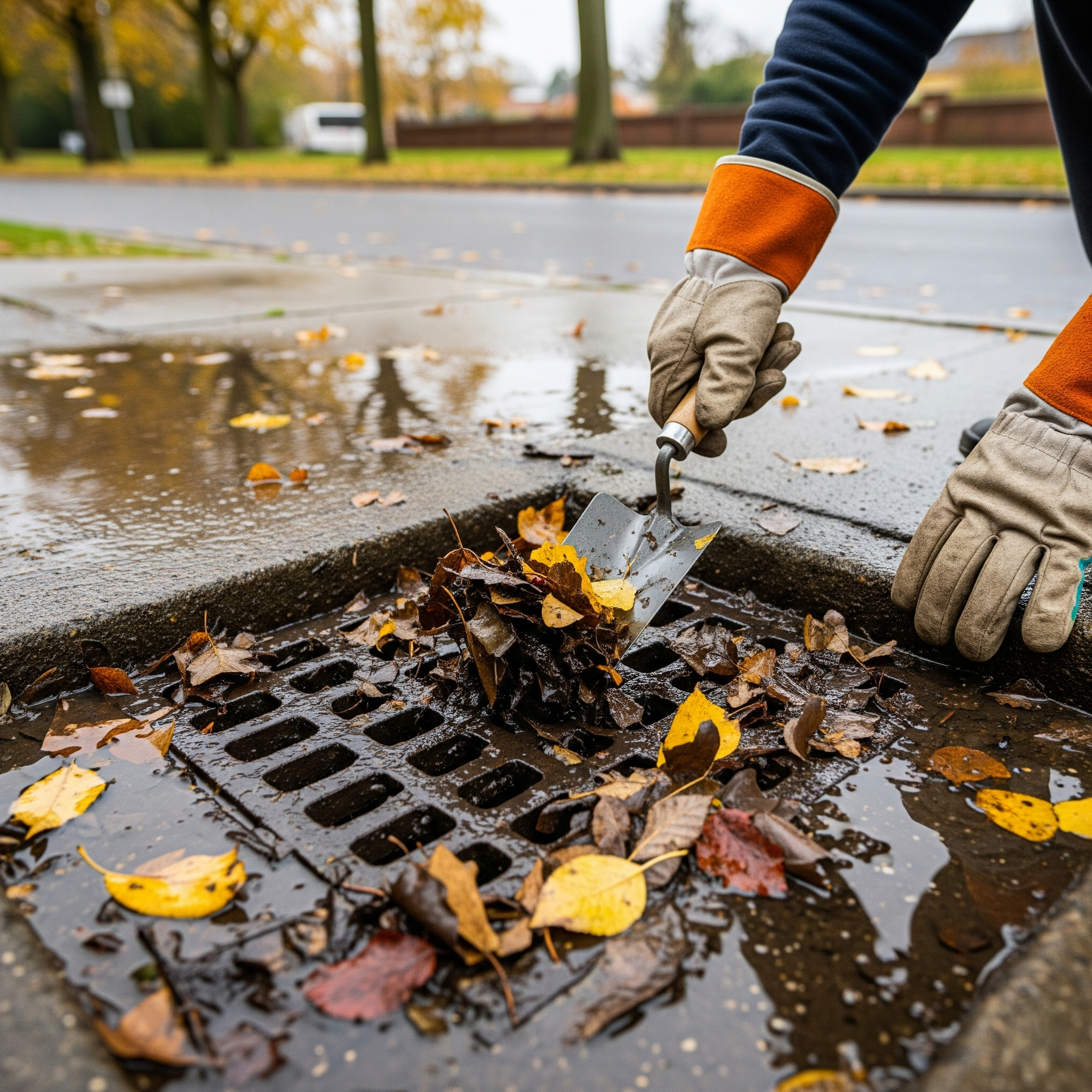









One thought on “How to Safely Unclog Your Drains”